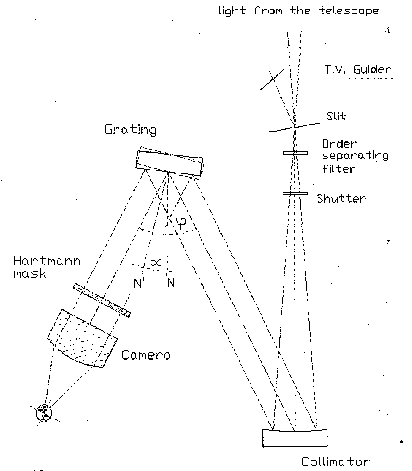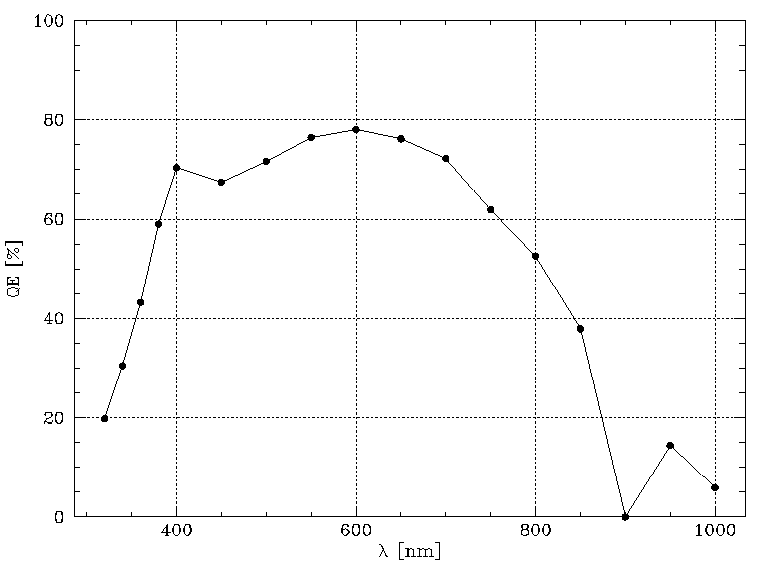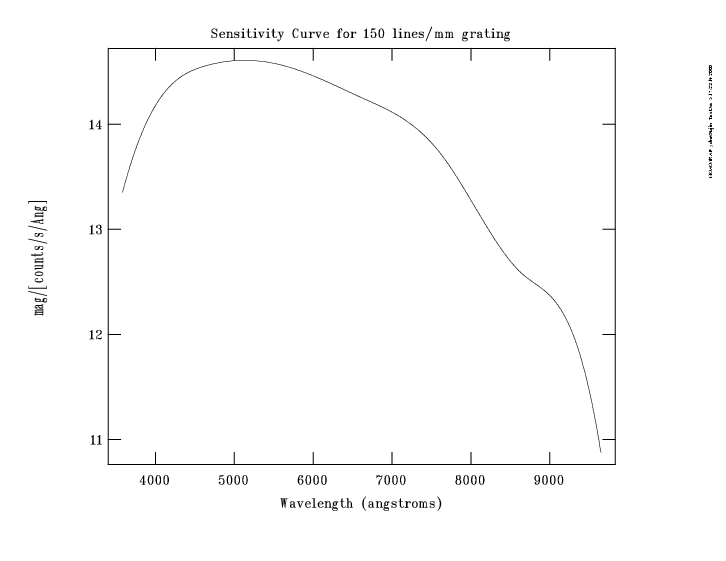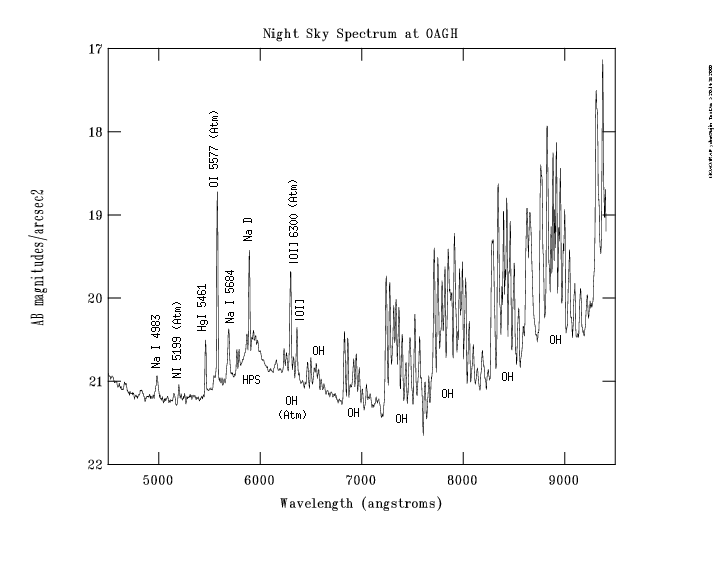Gratings available
| Gratings details |
|---|
| lines/mm |
Blaze wavelength (Å) |
Resolution (Å/pixel) |
Order |
Sensitivity Curve |
|---|
| 150 |
5000 |
3.2 |
1 |
Sens |
| 300 |
5000 |
1.6 |
1 |
| 300 |
7500 |
1.6 |
1 |
| 600 |
7500 |
0.8 |
1 |
| 830 |
8000 |
0.3 |
2 |
The dispersion angle is obtained from the wavelength (lambda) in Å,
the dispersion order (m) and the lines/mm of the grating (r) as:

The resolution is then given as:

with F = effective focal length of the spectrograph, which for the Cananea
Boller & CHivens is equal to 465mm.
Here is a web program
which calculates dispersion angle and spectral resolution
using the above formulae.
 The spectrograph is mounted at the
f/12 Cassegrain focus of the telescope, and is equipped with a
collimator of focal length 1080 mm and a camera of focal length 465 mm.
At the image scale of 8.185''/mm, this amounts to
approximately 0.463''/pix
()
along the spatial direction for the TK1024 CCD as the detector.
Slit width can be changed manually at steps of 1 micron all the way up to
1000 microns.
A typical slit width of 250 micron (or 2 arcsec) corresponds to 4
detector pixels.
Maximum slit length allowed is around 3 arcmin.
The spectrograph uses a reflection grating, whose orientation can be changed
with a micrometer at steps of 5 arcmin. A HeAr lamp is available with
the spectrograph for wavelength calibration.
In the default mounting of the spectrograph the slit is oriented
along east-west. This corresponds to a reading of 263 degrees on the
scale of the mounting panel (well, there is more than one way
of mounting and unfortunately it is not mounted always the same way).
For any other slit orientation the entire panel needs to be rotated.
The spectrograph is mounted at the
f/12 Cassegrain focus of the telescope, and is equipped with a
collimator of focal length 1080 mm and a camera of focal length 465 mm.
At the image scale of 8.185''/mm, this amounts to
approximately 0.463''/pix
()
along the spatial direction for the TK1024 CCD as the detector.
Slit width can be changed manually at steps of 1 micron all the way up to
1000 microns.
A typical slit width of 250 micron (or 2 arcsec) corresponds to 4
detector pixels.
Maximum slit length allowed is around 3 arcmin.
The spectrograph uses a reflection grating, whose orientation can be changed
with a micrometer at steps of 5 arcmin. A HeAr lamp is available with
the spectrograph for wavelength calibration.
In the default mounting of the spectrograph the slit is oriented
along east-west. This corresponds to a reading of 263 degrees on the
scale of the mounting panel (well, there is more than one way
of mounting and unfortunately it is not mounted always the same way).
For any other slit orientation the entire panel needs to be rotated.





 Back to the
Observatorio Astrofísico Guillermo Haro
Back to the
Observatorio Astrofísico Guillermo Haro